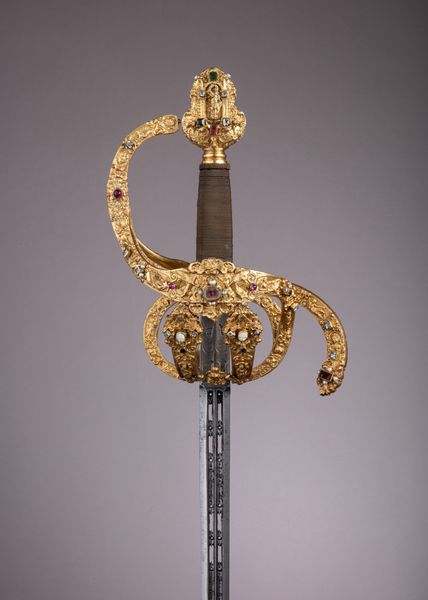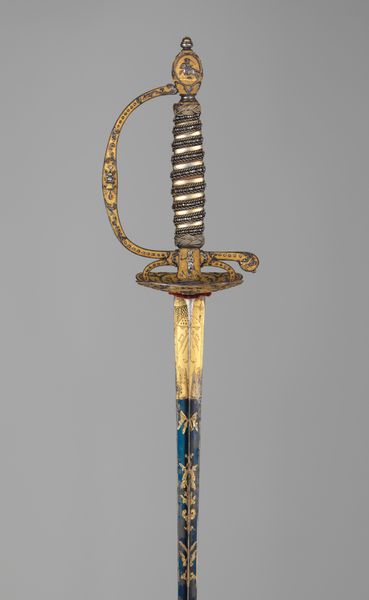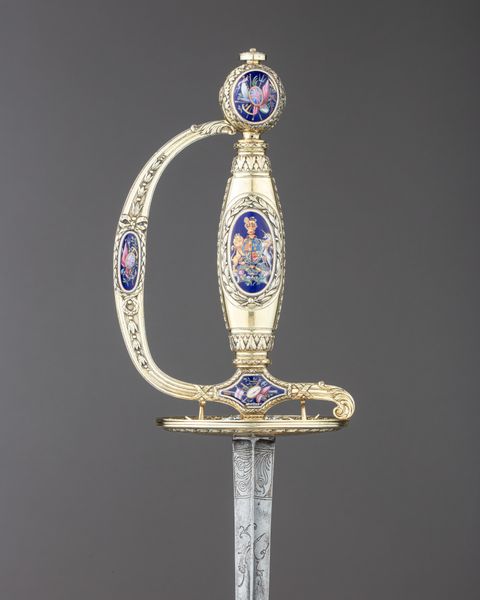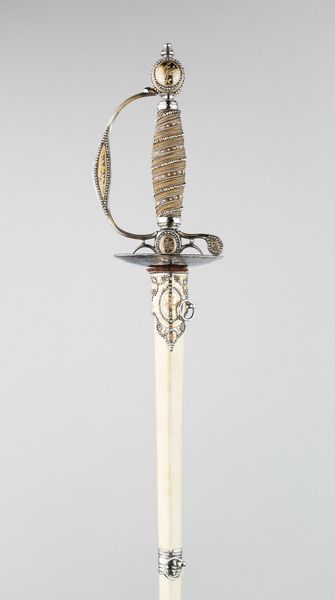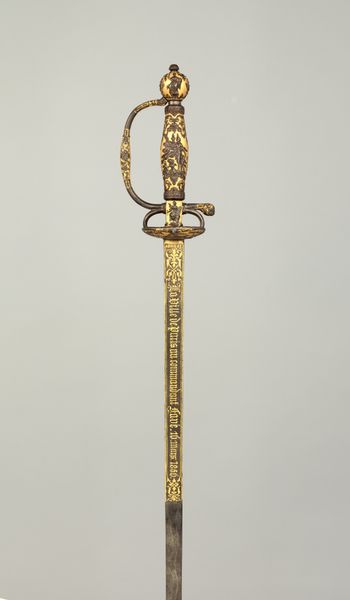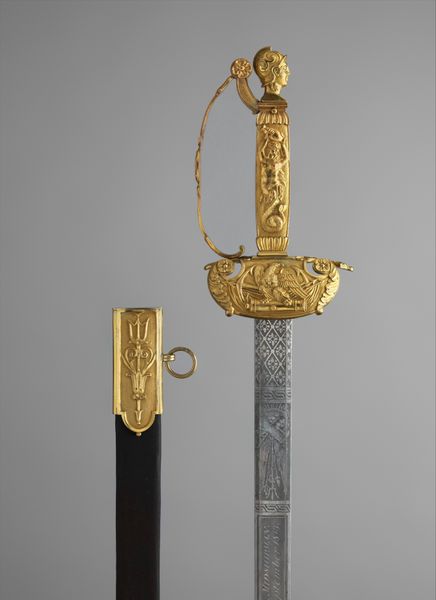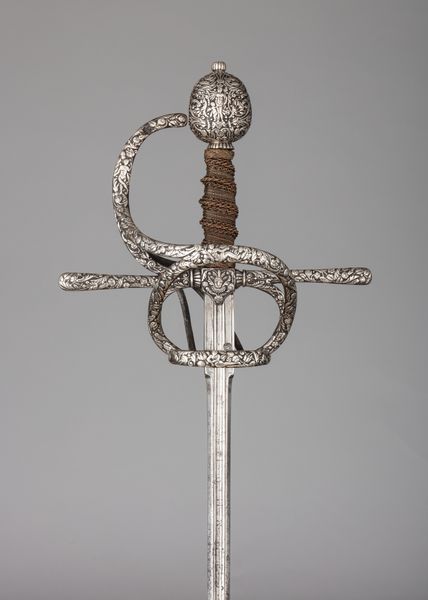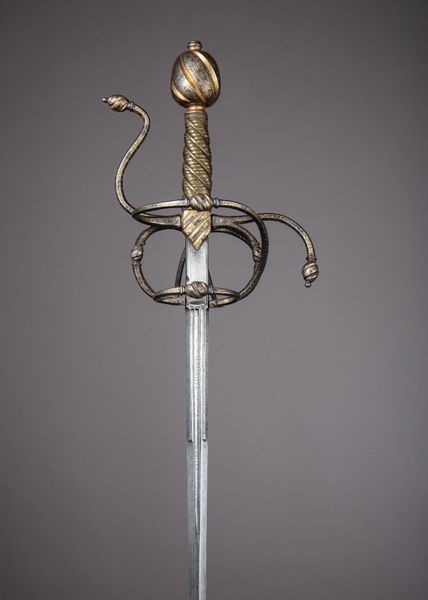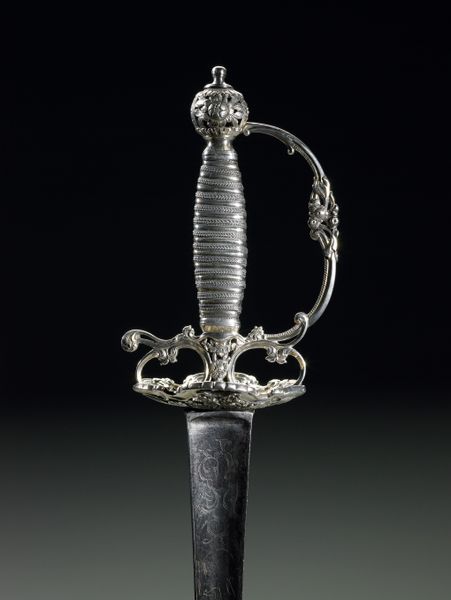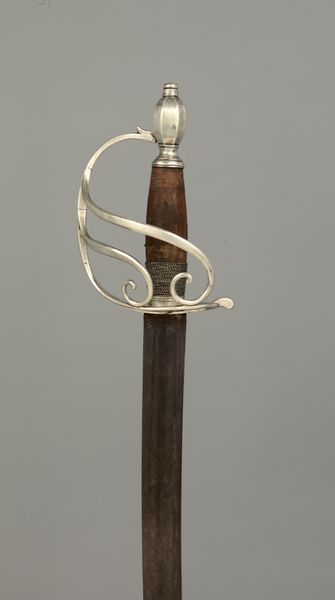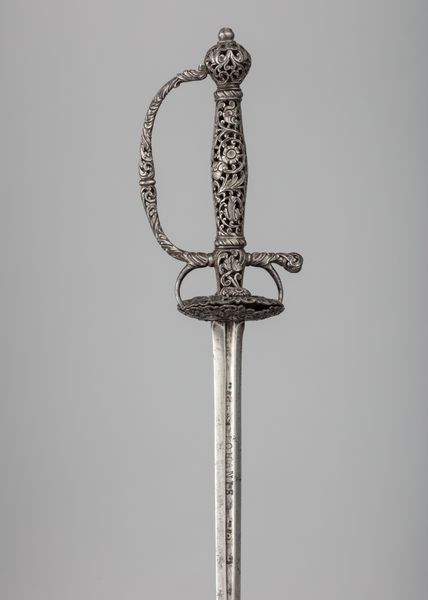
Dimensions: L. 42 3/8 in. (107.5 cm); L. of blade 35 in. (89 cm); Wt. 18.15 oz. (514 g); scabbard L. 35 3/4 in. (90.8 cm); Wt. 2.85 oz (81 g); storage case L. 46 1/8 in. (117 cm); Wt. 22.35 oz. (634 g)
Copyright: Public Domain
Editor: This is a Smallsword with Scabbard and Case, dating back to 1798-1799, and it's here at the Metropolitan Museum of Art. It's made with gold, silver, and other metals with carving. The intricacy and obvious expense suggest it was an accessory signaling wealth and power. What sociopolitical stories might be embedded in an object like this? Curator: That's a great question! The sword speaks volumes about the societal structures of late 18th-century England. This wasn't just a weapon; it was a symbol. A symbol worn almost exclusively by men of status. Think about the function of portraiture at the time—how the upper class and aristocracy use paintings, clothing and decorative objects, like this sword, to convey dynastic power. Can we unpack that concept of performance when analyzing the visual rhetoric of portraiture or ceremonial weapons? Editor: So, beyond its function as a weapon, it's almost like a piece of performative art itself, speaking to gender roles, class, and power... Curator: Exactly! Consider the artistry and craftsmanship, too – the Baroque style carving in the gold and silver. These weren't simply decorative choices. These aesthetics functioned as visual cues legitimizing power. Who controlled the narrative? Whose stories were being told – and whose were actively suppressed? That blue, perhaps the symbol of nobility? Editor: So the materials, style, even its practicality all feed into a carefully constructed message of authority. It makes you wonder about those who *weren't* represented in objects like this. What are some potential starting points for researching such dynamics? Curator: Starting with the historical context of England's social hierarchies is important, specifically focusing on sumptuary laws of that era that governed which classes could display their wealth through commodities like embellished swords. This illuminates a deeper, critical reading of art history, and helps us dismantle older, elitist models of aesthetic achievement that traditionally define art historical thought. Editor: This object offers much to reflect on. Thinking about it not just as a beautiful piece, but as a tool for communicating social hierarchy is compelling. Curator: Precisely, recognizing that material culture is a powerful voice.
Comments
No comments
Be the first to comment and join the conversation on the ultimate creative platform.
